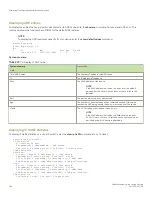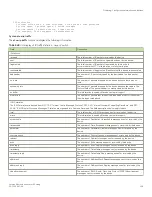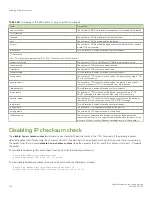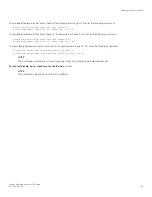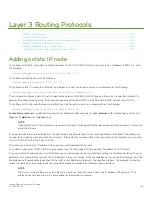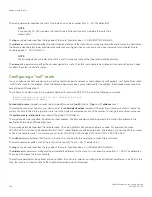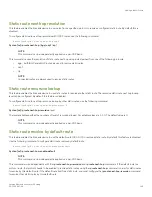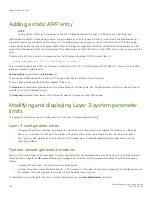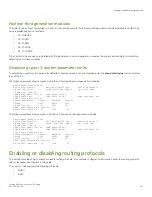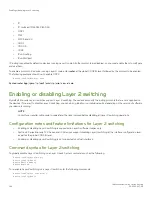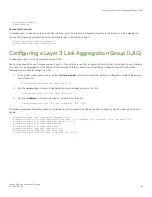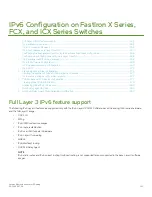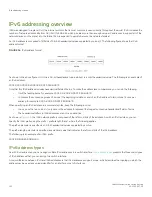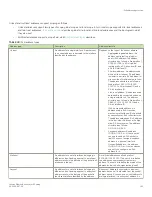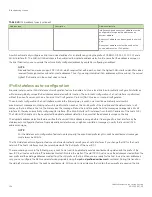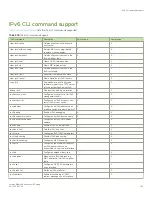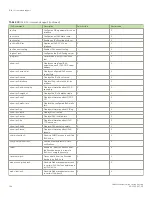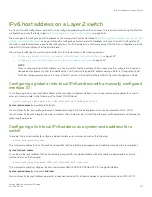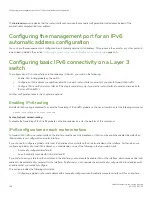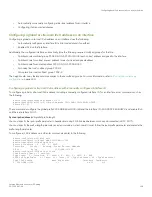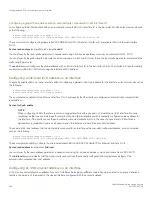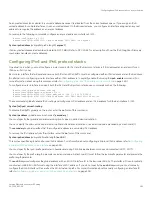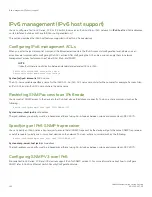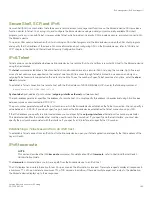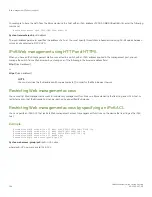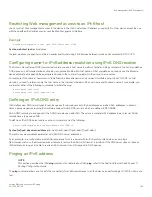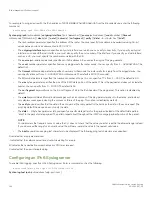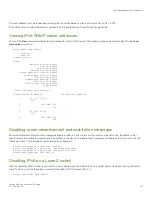
IPv6 addressing overview
IPv6 was designed to replace IPv4, the Internet protocol that is most commonly used currently throughout the world. IPv6 increases the
number of network address bits from 32 (IPv4) to 128 bits, which provides more than enough unique IP addresses to support all of the
network devices on the planet into the future. IPv6 is expected to quickly become the network standard.
An IPv6 address is composed of 8 fields of 16-bit hexadecimal values separated by colons (:). The following figure shows the IPv6
address format.
FIGURE 16
IPv6 address format
As shown in the above figure, HHHH is a 16-bit hexadecimal value, while H is a 4-bit hexadecimal value. The following is an example of
an IPv6 address.
2001:0000:0000:0200:002D:D0FF:FE48:4672
Note that this IPv6 address includes hexadecimal fields of zeros. To make the address less cumbersome, you can do the following:
•
Omit the leading zeros; for example, 2001:0:0:200:2D:D0FF:FE48:4672.
•
Compress the successive groups of zeros at the beginning, middle, or end of an IPv6 address to two colons (::) once per
address; for example, 2001::200:2D:D0FF:FE48:4672.
When specifying an IPv6 address in a command syntax, keep the following in mind:
•
You can use the two colons (::) only once in the address to represent the longest successive hexadecimal fields of zeros
•
The hexadecimal letters in IPv6 addresses are not case-sensitive
As shown in
, the IPv6 network prefix is composed of the left-most bits of the address. As with an IPv4 address, you can
specify the IPv6 prefix using the prefix / prefix-length format, where the following applies.
The prefix parameter is specified as 16-bit hexadecimal values separated by a colon.
The prefix-length parameter is specified as a decimal value that indicates the left-most bits of the IPv6 address.
The following is an example of an IPv6 prefix.
2001:DB8:49EA:D088::/64
IPv6 address types
As with IPv4 addresses, you can assign multiple IPv6 addresses to a switch interface.
presents the three major types
of IPv6 addresses that you can assign to a switch interface.
A major difference between IPv4 and IPv6 addresses is that IPv6 addresses support scope , which describes the topology in which the
address may be used as a unique identifier for an interface or set of interfaces.
IPv6 addressing overview
FastIron Ethernet Switch Layer 3 Routing
152
53-1003627-04
Summary of Contents for FastIron SX 1600
Page 2: ...FastIron Ethernet Switch Layer 3 Routing 2 53 1003627 04 ...
Page 16: ...FastIron Ethernet Switch Layer 3 Routing 16 53 1003627 04 ...
Page 20: ...FastIron Ethernet Switch Layer 3 Routing 20 53 1003627 04 ...
Page 142: ...FastIron Ethernet Switch Layer 3 Routing 142 53 1003627 04 ...
Page 150: ...FastIron Ethernet Switch Layer 3 Routing 150 53 1003627 04 ...
Page 200: ...FastIron Ethernet Switch Layer 3 Routing 200 53 1003627 04 ...
Page 214: ...FastIron Ethernet Switch Layer 3 Routing 214 53 1003627 04 ...
Page 350: ...FastIron Ethernet Switch Layer 3 Routing 350 53 1003627 04 ...
Page 476: ...FastIron Ethernet Switch Layer 3 Routing 476 53 1003627 04 ...
Page 588: ...FastIron Ethernet Switch Layer 3 Routing 588 53 1003627 04 ...

